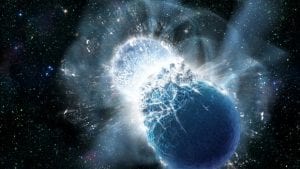Laser Interferometer Gravitational Wave Observatory (LIGO)
Faculty
New Discoveries
Oregon is part of the LIGO Scientific Collaboration (LSC), a group of scientists focused on the direct detection of gravitational waves, using them to explore the fundamental physics of gravity and to develop gravitational wave science as a tool of astronomical discovery.
The Laser Interferometer Gravitational-Wave Observatory (LIGO) consists of two widely separated installations within the United States — one in Hanford Washington and the other in Livingston, Louisiana — operated in unison as a single observatory. Funded by the National Science Foundation, LIGO is an international resource for both physics and astrophysics.
On September 14, 2015, one of our researchers was at the Hanford site when the first-ever direct observation of gravitational waves — ripples in the fabric of space and time predicted by Albert Einstein 100 years earlier — was made. Since then the LIGO and the European Virgo gravitational-wave detectors have confidently detected gravitational waves from many more stellar-mass binary black hole mergers and one merger of neutron stars, which are the dense, spherical remains of stellar explosions.
Our research at LIGO is supported by the National Science Foundation under grant numbers 1912604-PHY, 1764464-PHY, and 2146528-PHY.
More Information
AAS NOVA article: Addressing a gap in our knowledge of black holes
Around the O article: Detecting black hole collisions now routine
